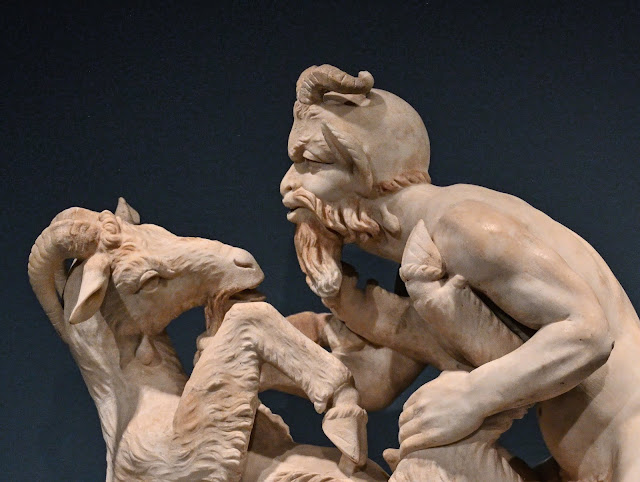A goat and satyr "Buried by Vesuvius" at the Getty Villa until October 28, 2019
A goat and satyr "Buried by Vesuvius" at the Getty Villa until October 28, 2019.
The marble sculpture of the woodland god Pan having intercourse with a she-goat was discovered in the Villa dei Papiri in 1752. It immediately became notorious and was long off-limits, viewable only in the vaults of the royal palace at Portici by special permission of the king. Explicit imagery was common in antiquity. Some modern commentators have interpreted this sculpture as evidence of the Romans’ reverence for the generative power of sex. Others have seen it as a satire on the bestial nature of all men. As many of the sculptures in the villa seem to have been grouped thematically, it is tempting to link this work with busts found nearby such as the Macedonian king Demetrios Poliorketes, often depicted with horns, like Pan, and famously dissolute. The satyr and goat were found on the south side of the rectangular peristyle on March 1, 1752.
Image: Closeup of Satyr and goat found on the south side of the Villa dei Papiri in Herculaneum, courtesy of Allan Gluck.




Comments
Post a Comment